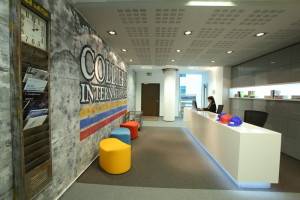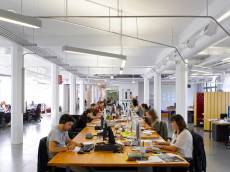May 17, 2013
Colliers uses Bucharest HQ to showcase office design for Generation Y
The Bucharest office of property consultancy Colliers International has been revamped to showcase an office design model that the company claims will meet the needs of the next generation of employees. Colliers has worked with architecture studio Prographic and drawn on its own studies of Generation Y and their needs to create the space. According to the firm, the prototype office will incorporate the newest technology, the latest thinking on workplace design and space planning and set new standards in sustainability. As well as Prographic, Colliers International worked with suppliers including ASUS, Techo, Bene, Bittnet Systems and Saint-Gobain to create its vision.






























May 14, 2013
Will the Great Trade Association Merger have any impact on office design?
by Mark Eltringham • Comment, Facilities management, Property, Workplace design
More →